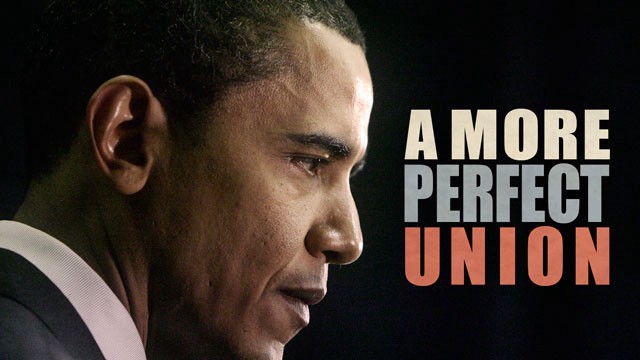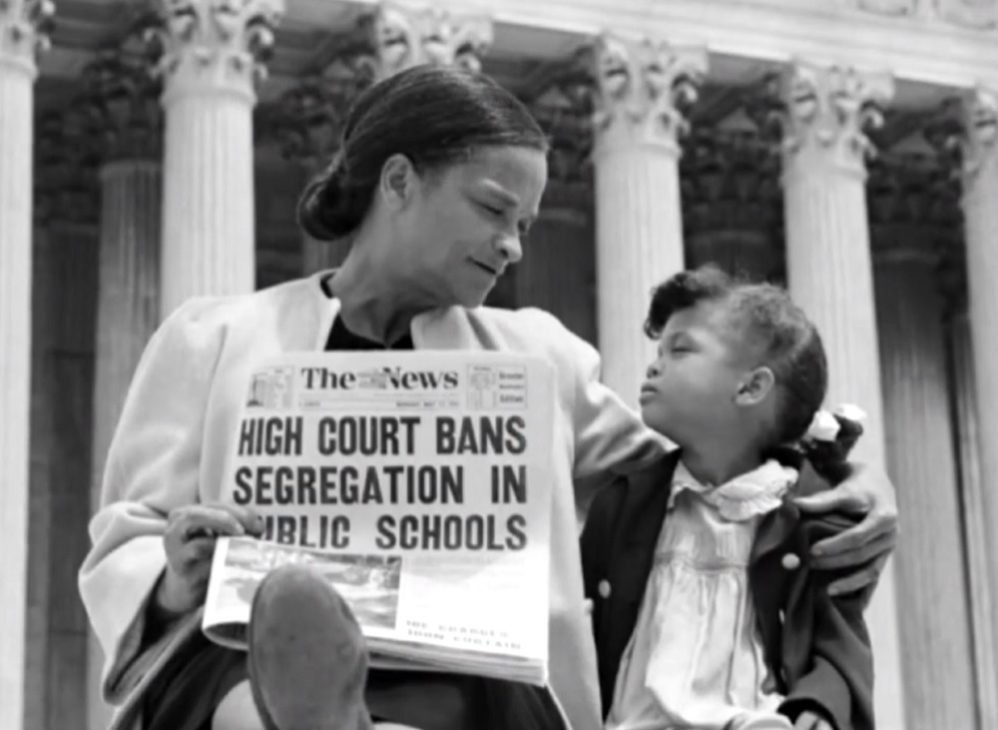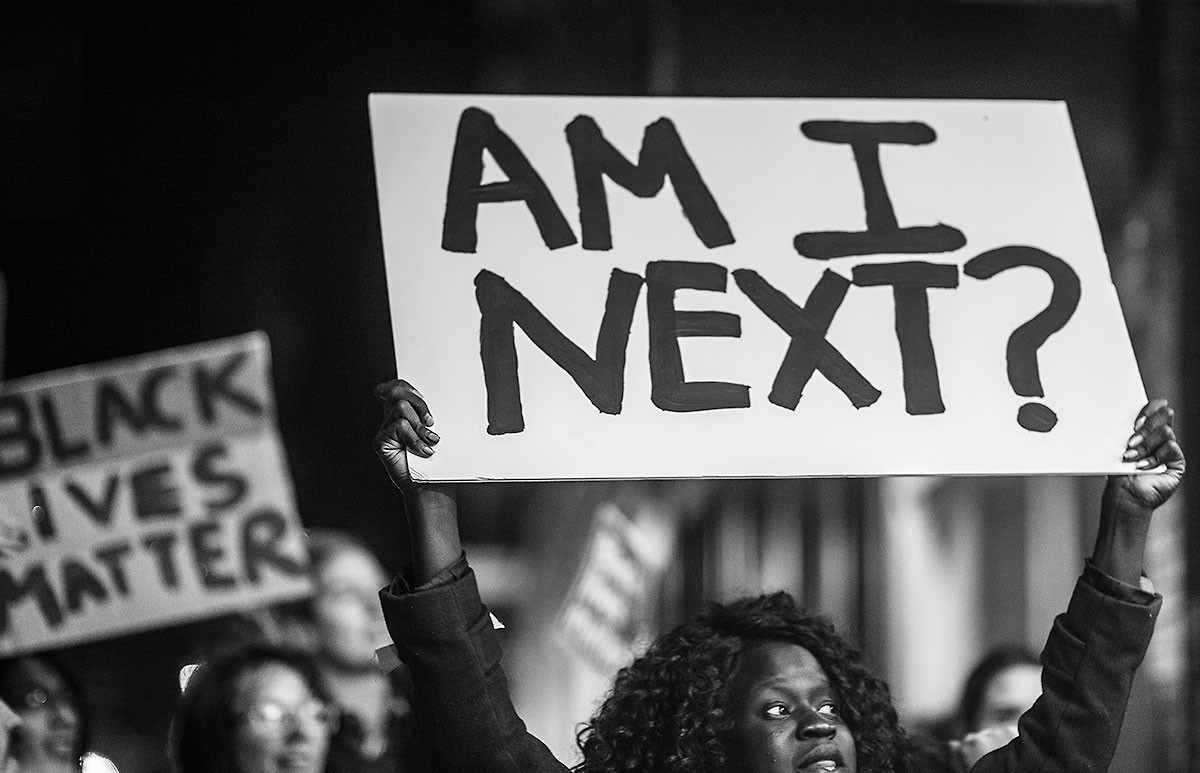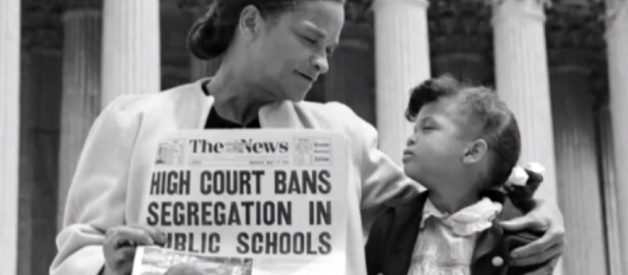A rhetorical analysis of Obama?s 2008 speech on race
Addendum (6/5/2020):
The May 25, 2020 killing of George Floyd by a negligent white police officer has reignited the war on racial inequality in our country. Protests are being held around the world. Obama?s A More Perfect Union is a chapter in the battle we?ve been fighting since the inception of this nation and George Floyd?s death is another part of that story. It must not be in vain.
We must ask ourselves, ?How long will we continue to allow our brothers and sisters to be treated as less than?? We shouldn?t have to exclaim that ?Black Lives Matter.? They just should, yet here we are. I share Obama?s hope and Martin Luther King Jr?s dream that we will someday be able to embody the ?united? portion of our country?s namesake. We owe it to ourselves and we owe it to future generations.
This story was adapted from an academic essay I wrote in 2010. It was previously published in an undergraduate writing journal at Sacramento State University. I?ve also added additional context to bring it up to speed with modern day race relations in America.

Responding to a controversy that threatened his presidential campaign, Barack Obama delivered a speech many consider among the greatest ever on the topic of race. A More Perfect Union was delivered March 18, 2008 at the National Constitution Center in Philadelphia. Response was largely positive, drawing comparisons to Martin Luther King Jr.?s 1963 I Have A Dream speech.
This article serves as a rhetorical analysis of Obama?s speech, beginning with a brief review of America?s history of racial tensions.
Following America?s declaration of independence from Great Britain on July 4, 1776, a framework was constructed aiming to guarantee citizens equal treatment and protection under the law. However, the ?Land of the Free? has been plagued by recurring instances of racial inequality.
From the widespread enslavement of Black people during the 18th and 19th centuries to the 1896 Supreme Court decision of Plessy v. Ferguson, which upheld ?separate but equal? racial segregation in the Constitution, it is clear America?s founding values have not been applied equally.

A landmark victory for the Black Civil Rights Movement came with the 1954 Supreme Court decision Brown v. Board of Education, which overturned Plessy v. Ferguson and declared racial segregation of public schools unconstitutional and fundamentally unequal. The decision set precedent for future cases and laid the foundation for other forms of de jure (legal) racial segregation to be declared unconstitutional.
Fast-forward to 2008. The election of America?s first Black President led many to speculate whether race relations were still a pervasive issue. Fact: They were. Many studies conducted in the years preceding Obama?s speech on race revealed a continuing division of social, political, and cultural values between Black and White Americans.
 Photo by Michele Stapleton
Photo by Michele Stapleton
In 2013, the #BlackLivesMatter movement began on social media following George Zimmerman?s acquittal in the fatal shooting of Trayvon Martin, a Black teen, on February 26, 2012. Public demonstrations following the Summer 2014 killings of Michael Brown and Eric Garner (both Black men) by White police officers later catapulted Black Lives Matter into the national spotlight.
Today, Black Lives Matter continues to campaign against violence and systemic racism toward Black people and Obama?s dream of a ?more perfect union? remains as relevant as ever.
Barack Obama was born to a Black man from Kenya and a White woman from Kansas, and was raised with the help of his White grandparents. He graduated from Harvard Law School before representing Illinois as a United States Senator from 2005 to 2008. He resigned shortly after being elected the 44th President of the United States.
During Obama?s run for the Democratic Party presidential nomination, his (now former) pastor and campaign participant Reverend Jeremiah Wright was scrutinized by media and the public for inflammatory rhetoric made in past sermons accusing the American government of perpetuating racism and being responsible for the conditions that caused the 9/11 terrorist attacks.
The controversy caused widespread questioning of Obama?s viability as a candidate and resulted in Wright?s removal from the campaign. Ultimately, Obama decided merely denouncing Wright?s statements was not enough. Thus, the basis for A More Perfect Union emerged.
A More Perfect Union ? Full Speech ? YouTube
Obama addressed Americans as a unified whole and the speech was viewed over 1.2 million times the first day it was uploaded to YouTube. In a 2008 interview with Time magazine, he explained his decision to respond to Wright?s comments on such a large scale:
?My gut was telling me that this was a teachable moment and that if I tried to do the usual political damage control instead of talking to the American people like? they were adults and could understand the complexities of race, I would be not only doing damage to the campaign but missing an important opportunity for leadership.?
Obama?s speech highlighted the issue of racial tension in America while also seeking to give context to Wright?s statements. To begin, he quoted the section of the Preamble after which the speech was named, ?We the people, in order to form a more perfect union.?
Pointing out the proximity to Independence Hall, where the Constitution was signed, he asserted that slavery and legalized discrimination in our past conflict with the constitutional ideals of liberty, justice, and equal citizenship under the law. To atone for these ?sins,? he argued, we can perfect America by setting aside personal differences and uniting against shared social issues.
Among these social issues is deep-seated anger in Black communities, which Obama attributed to the lasting effects of historic discrimination. He also recognized resentment by White immigrants who did not perpetuate Black-White racial tensions but receive blame based on their skin color. Though he acknowledged their legitimacy, he cautioned that harboring such feelings would prevent us from achieving unity.
Appealing to the American motto, ?E Pluribus Unum,? or ?out of many, [we are] one,? Obama insisted unification is woven into American conscience. Labeling himself an unconventional candidate because of his multiethnic background, he expressed admiration for ?commanding victories? in predominantly White states and in South Carolina, where he garnered support from Black and White Americans alike.
This, he inferred, shows America?s hunger for unity. Ultimately, he maintained that by moving beyond America?s ?racial stalemate? and addressing shared social problems (consequences of the past), we could achieve ?a more perfect union.?
Analyzing Obama?s Rhetoric
American theorist Kenneth Burke defines ?man? as ?the symbol using, making, and misusing? inventor of the negative? goaded by the spirit of hierarchy, and rotten with perfection.? It takes perceptive imagination to describe something as ?not? something else. Through the lens of the negative, humans create the concepts of identification and division central to Burkeian ideology.
Identification (or consubstantiation) refers to a rhetor?s perception of being ?substantially one? with the audience being persuaded. According to Burke, this is accomplished through speech, gestures, tonality, order, images, attitudes, and ideas the audience can identify with.
Obama attempted to achieve patriotic consubstantiation by quoting the Preamble and highlighting America?s shared social problems. Through the story of his biracial upbringing, he also attempted to identify with the racial diversity of the American people. Identification inherently creates division.
According to Mark Stoner and Sally J. Perkins, division serves to provide order and structure to human experience. Obama created division from actions that lead America away from perfection and unity, exemplified by his condemnation of Wright?s statements. He also criticized attempts to racially polarize his campaign:
?We can pounce on some gaffe by a Hillary supporter as evidence that she?s playing the race card, or we can speculate on whether White men will all flock to John McCain in the general election regardless of his policies. We can do that. But if we do? nothing will change.?
Through identification and division, Burke?s concepts of victimage and hierarchy result. Burke asserts that humans are in a ?perpetual state of guilt? resulting from our imperfection, and to atone for that guilt we must either scapegoat (blame others) or commit mortification (blame ourselves).
Obama?s rhetoric served to scapegoat Rev. Wright and facets of the American public, condemning them for ignoring the prevalence of American racial tensions and for dwelling upon feelings of resentment that followed those tensions.
 From Left to Right: Elizabeth, Ashley, and Trakia ? Photo by the Obama Campaign
From Left to Right: Elizabeth, Ashley, and Trakia ? Photo by the Obama Campaign
His speech visualized a hierarchy with perfection as the top-most element. He presented the story of Ashley Baia (pictured above), a young White woman who worked passionately for his campaign to organize her predominantly Black community. The story demonstrated that it was possible to move higher up on the hierarchy of perfection. He warned, however, that unity is only the first step to perfecting America.
Applying Cham Perelman?s theories, the ambition of Obama?s speech becomes more evident. A central idea of Perelman?s ?New Rhetoric? is that of the universal audience, which includes ?all people who are rational and competent with respect to the issues being debated.?
By this definition, Obama?s universal audience included those ?rational and competent? enough to set aside differences and atone for America?s mistakes. Obama held that all Americans are capable of working to perfect our union. His attempts to persuade the universal audience are revealed by examining Perelman?s concepts of appeals to the real and dissociation.
Appeals to the real highlight causal or correlated relationships through the use of examples, metaphors, and analogies to reason with an audience. Examples provided by Obama included evidence of past racial discrimination leading to Black anger (Jim Crow segregation, inferior education for Blacks, and limited employment opportunities) which he explained directly influenced some of Wright?s controversial statements.
Exposing the racial gap still present in society, Obama forced the audience to look into a metaphorical mirror in hopes of revealing widespread disapproval of the society reflected. This strategy embodied Perelman?s theory of dissociation, which is the ?creating [of] sufficient cognitive dissonance in an audience [to] reduce their uncertainty by recognizing and accepting a new way of describing or interpreting the real.?
Dissociation is often present in arguments concerning ?myths? and ?reality.? The myth Obama denounced is that racism and its lasting effects have become nonexistent, citing historical evidence and Wright?s statements as evidence of an immense societal issue. He attempted to further strengthen his appeal using quasi-logical arguments.
According to Stoner & Perkins, quasi-logical arguments are made by providing information to lead an audience to a desired conclusion by mimicking the structure of a classical syllogism. Below is Obama?s primary quasi-logical argument:
- Major Premise???American society is imperfect.
- Minor Premise???We (and Rev. Wright) are reflections of American society.
We were led to conclude that we are imperfect because we embody the shortcomings of a flawed society. Ultimately, Obama?s idea that we can achieve perfection by working to solve America?s shared social problems is upheld. Now that the rhetoric itself has been analyzed, it is important to discuss why Obama made the rhetorical choices he did.
Interpreting Obama?s Rhetorical Choices
The decision of Obama to frame his speech around the Preamble, adopted over 220 years ago, was a risk. However, had he relied solely on his own Christian morals instead of backing his argument with the rights America was founded on, he might have failed to achieve consubstantiation on the level intended. He knew few would argue against such ingrained societal values, as doing so would alienate them from the rest of the nation.
Another risk was weaving race relations into the framework of the speech, which brought feelings Americans may not have wanted to acknowledge to the foreground. Had Obama not addressed racism, however, the speech might not have served as the teaching moment he intended it to be.
Obama understood the sensitivity of the issue and sought a way to acknowledge past mistakes while unifying Americans under a common goal. He avoided revealing society?s imperfections in himself, perhaps feeling this would more effectively inspire Americans to support his campaign and align their thoughts with his.
As America?s first Black President, the issue of race permeated Obama?s campaign from the start. Many questioned whether his skin color would discourage the White majority from electing him. He attempted to counteract any reservation by rallying under a message of unity and progress.
It was not enough for activists to call for reform. Obama felt, given his position, it was his responsibility to give a speech that could change society?s view of race forever. Had he not given the speech, it is quite possible he might not have garnered the widespread support needed to be elected. Conversely, he took a risk that could have backfired had his argument not been so carefully constructed.
This critique serves to confirm America?s failure to epitomize the principles set forth by the Constitution, reinforcing the necessity and appropriateness of Obama?s speech.
Ultimately, Obama used the quasi-logical appeal of unity as a method for achieving perfection because he knew Americans would identify with its patriotic nature. Additionally, he provided a solution for shared social problems without having to tarnish his image as a leader or place blame on himself.
Evaluating the Effectiveness of Obama?s Rhetoric
T o evaluate the effectiveness of Obama?s rhetorical strategies, the speech?s namesake will be referenced. The Preamble (written in 1787) reads:
?We the People of the United States, in order to form a more perfect Union, establish Justice, ensure domestic Tranquility, provide for the common defense, promote the general Welfare, and secure the Blessings of Liberty to ourselves and our Posterity, do ordain and establish this Constitution for the United States of America.?
The major goal set forth in both the Preamble and Obama?s speech is to ?form a more perfect union.? To do so, the Preamble states justice must be established. ?Justice? shall be defined as the quality of being fair and reasonable.
Obama?s equal recognition of Black anger and White resentment, and his acknowledgment of our personal imperfections as reflections of our imperfect society proved both fair and reasonable.
Second is the ensuring of ?domestic tranquility.? Tranquility is defined as ?freedom from disturbance.? This goes hand-in-hand with the third and fourth goals of providing for ?the common defense? (implying a responsibility to protect America from internal and external threats) and promoting the ?general welfare? (or wellbeing) of the people.
As evidenced by the continuation of racial tensions under the Obama Administration and now under the Trump Administration, Obama?s rhetorical tactics alone could not ensure freedom from disturbance and protection against threats. However, it is inferred that by inspiring unification and perfection, it is still possible to achieve domestic tranquility and general wellbeing over time.
Last is the securing of ?blessings of liberty to ourselves and our posterity.? Posterity refers to future generations, which leads to the conclusion that we must ensure liberty (or freedom) is equally accessible now and in the future.
Obama?s speech embodies this idea by providing the solution of a society working together to solve common issues. Through evaluation of the speech using the Preamble, Obama acted effectively to highlight the importance of moving toward a more progressive social structure.
Whether A More Perfect Union significantly altered the course of American race relations is yet to be determined (11 years after the speech was given), but he certainly gave Americans the tools to do so. It?s up to us to use them.


